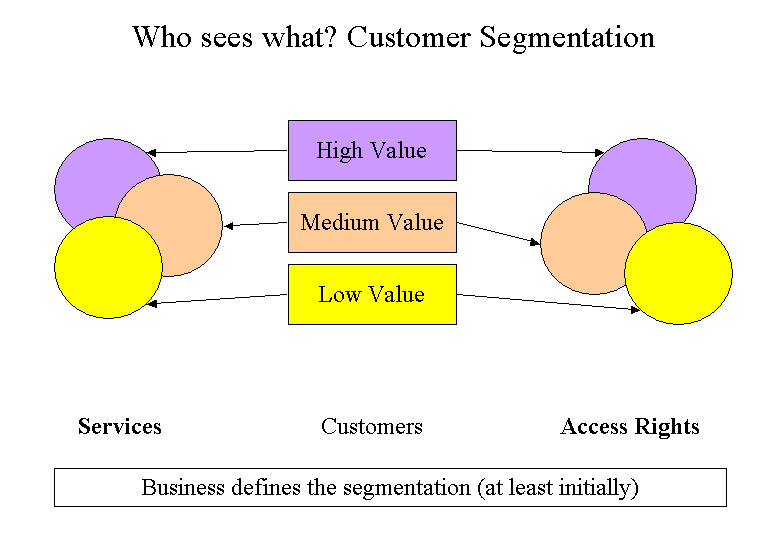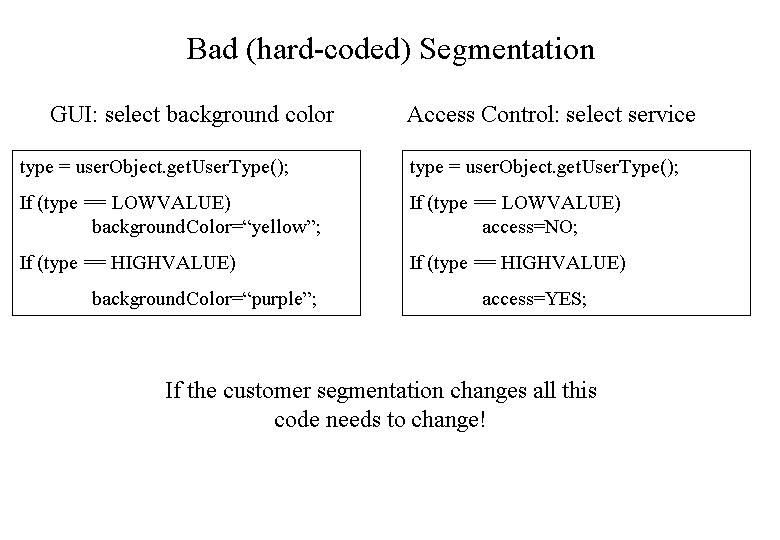Table of Contents
One of the most important concepts of an Enterprise Portal is the definition of customers and their segmentation. "Who sees what?" is defined by the segmentation which is usually defined by the business - at least initially. The segmentation defines not only what can be seen or used by a specific customer. It drives access control as well. In other words: Authorization information drives GUI and access control and is itself driven by the customer segmentation.
The problems with customer segmentation are as follows:
Business likes to change the customer segmentation frequently as a result of changes in marketing strategy.
A rule engine would let business change their definitions without changes in code
How does one integrate a rule engine with a clean interface and without distributing calls to the rule engine throughout the system?
Dynamic segmentation needs to perform well. Hard to achieve with rule engines.
After the first discussions with business about the portal you will notice that there are few areas that are more discussed than the way customers are categorized. In other words: customer types. The only sensible conclusion coming from those discussion is that the portal needs to define customer segmentation as a "hot spot", designed for change. A more subtle problem are exceptions to rules. Many people like hierarchical, non-overlapping classifications. E.g. a tree of customer types each with non-overlapping access rights. But this is "software" thinking - not business thinking. It should always be possible to also cover the exception like "this is a customer of type A, thereforeshe has rights 5,7,9 but in case it is Mrs.Doe she also gets right 12". In other words: make your customer segmentation not strictly type based. Include instances as well. Do not force the system to create a new type for the above case.
Equally important is the question what customer "type" really means. It is basically a set of rights or properties - defined by business. Therefore, because it belongs to the business conceptual level (domain) the "type" as a concept should not enter the lower levels of the portal system. What does this mean? It simply means that you should not see code in the portal that asks for customer "types" and derives knowledge from the type (see below: hard-coded types). The result will be portal services that are not specific to certain customer segmentations.
In many cases business defines a different look and feel for different customers (besides the different services available to them). During rendering of the personalized homepage, GUI classes or templates usually need to know certain things: the background color, an emotional picture etc. How does a Java Server Page get this information?
One possibility is shown is the picture below: hard-coded type information is used to derive the background color for a specific customer.
Obviously this will lead to GUI changes in case the customer segmentation (or only the color assignments) changes.The same goes for access control: When a homepage request enters the system, the portal needs to find out which services the customer is entitled to. It makes no sense to run services that will generate information the customer is not allowed to see. The above picture shows an implementation that uses hard-coded customer types to assign access rights. Like in the GUI case this code is fragile.

